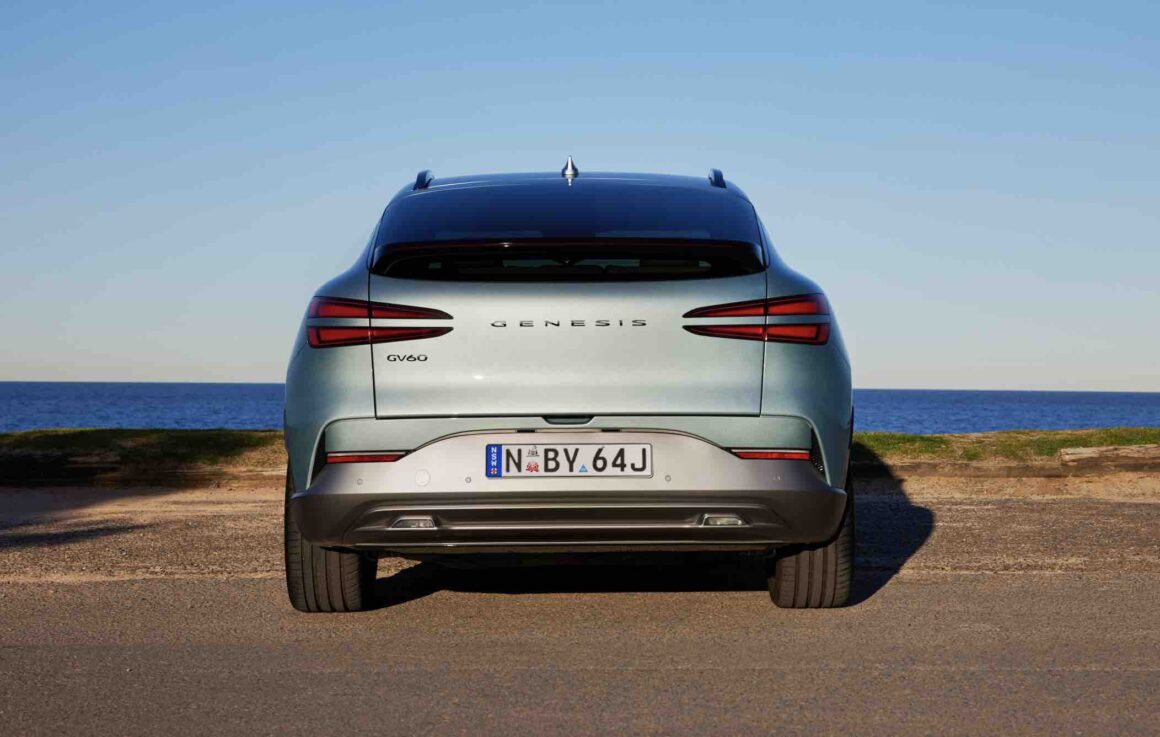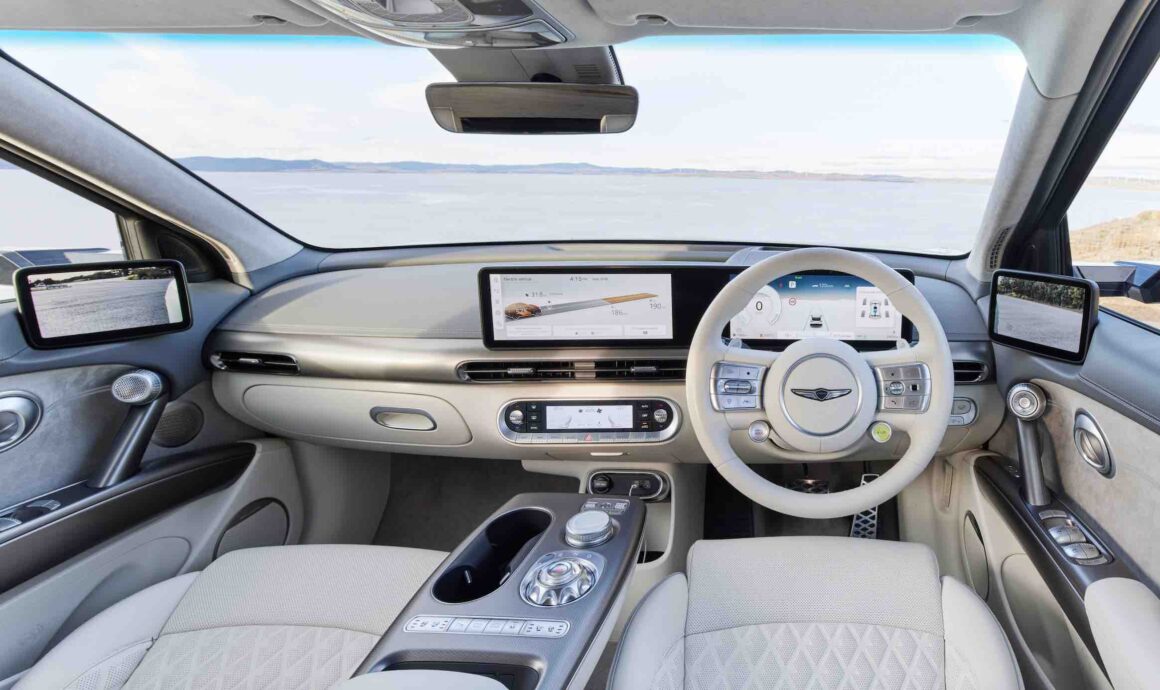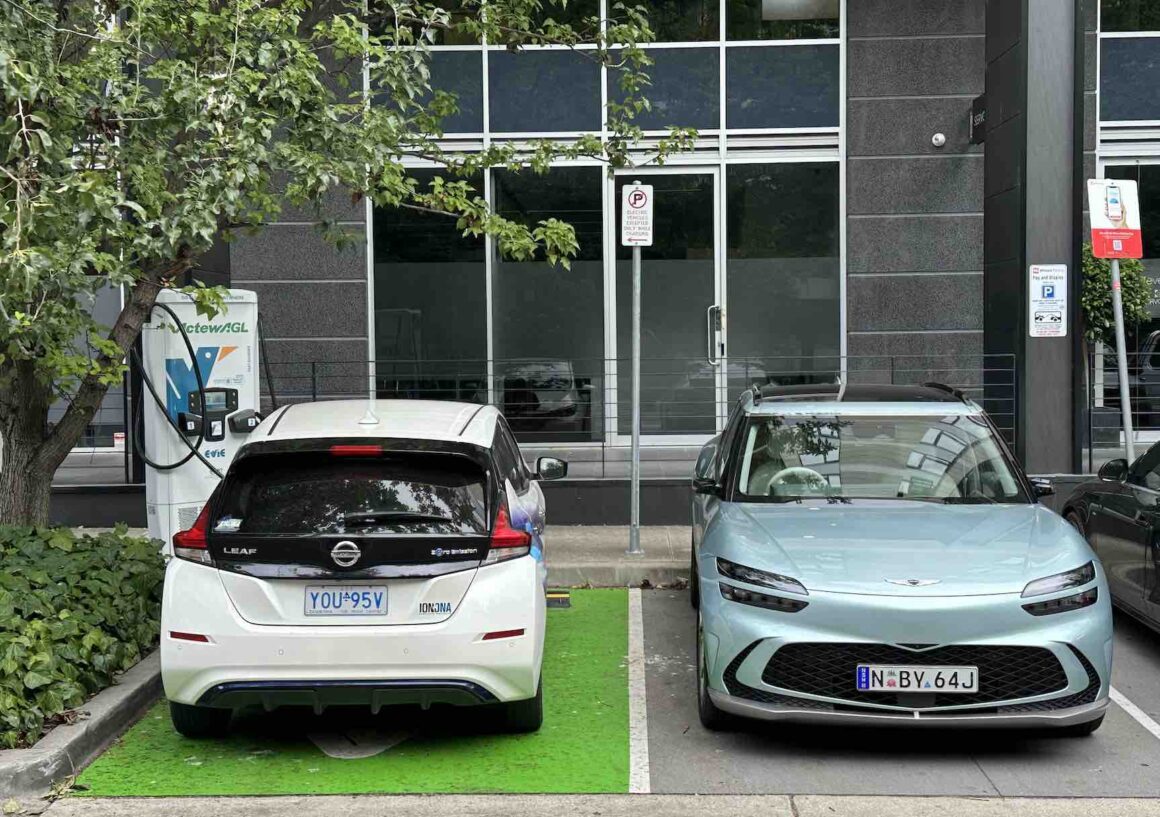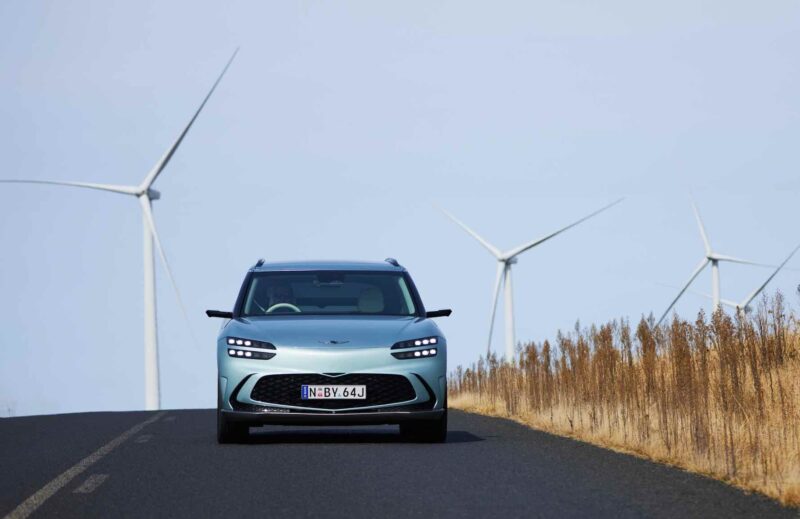Well, this was an unexpected delight. I caught sight of a Genesis GV60 electric SUV when I returned the less radical Genesis G80 electric sedan to Hyundai headquarters in Sydney a few weeks ago. It was sitting in the charging bay, and I thought to myself, that looks nice, I must ask if I can have a drive of one.
I did, and I could. And I have to declare that this is one of the most enjoyable electric vehicles I’ve had the pleasure to drive – it has just about the right balance of luxury, space, performance and vehicle to load features.
And, it completes a great set of electric SUV offerings from the Hyundai/Kia/Genesis group – the Ioniq 5, the EV6, and the GV60.
For many, the benchmark in the space of SUV crossovers is the Tesla Model Y, particularly its performance version. I think the Hyundai group has it surrounded – in terms of interior space (Hyundai Ioniq 5), performance (Kia EV6), and a balance of the two (Genesis GV60). And they all have something that the Model Y does not – vehicle to load.
The GV60 is by no means perfect. Genesis – Hyundai’s luxury brand – has done something radical with the side mirrors, and brought them inside. And that means that reverse parking – or reversing of any sort – doesn’t feel quite as comfortable as it used to be. And there are a couple of other annoying things about it.

But overall, this is a mighty good looking vehicle that draws on the best aspects of the Ioniq 5 (in terms of overall presentation and interior space), and some of the top handling of the EV6.
And it has some grunt. The acceleration from 0-100km/h is advertised at between 4.0 and 5.0 seconds. The latter is fast enough and “sports mode” adds some real spike to its performance. It’s even got a “boost” button, that helps to launch the GV60 at a speed that felt as quick as the Model Y Performance.
And, to top it off, it gives you a massage at the same time – Genesis calls it the “ergo motion” seat, and it came on around every hour or so or driving. It is part of a seven air-cell package that also provide additional side support that automatically adjusts according to the driving mode or vehicle speed.
If you hit sports mode, the driver’s seat even gives you a hug. It’s that sort of car. And yes, like the G80 I reviewed last month, it will also close the windows when it approaches the entrance to a tunnel. It wants to keep you safe, and comfortable.
It is why the top end of the EV range is so damn exciting. As we wrote about the MYP, offering cars around the $100,000 is not the solution to the need to shift the global car fleet to electric, but it’s an important step in the right direction.
Many, perhaps not all, of the best features of these electric cars will filter down to lower priced EVs. Right now, though, you’d have to wonder why on Earth you would pay the same money for a fossil fuelled car. And it seems most people are in agreement, in the upper price bands the EV versions are outselling the comparable petrol and diesel offerings.
The GV60 is not cheap. It comes in at around $113,000 on the road, with all the normal inclusions, which is way out of my price band, but worth a look for those with the cash to spend.

The interior is very comfortable, and the leather upholstery feels very nice. Like the Ioniq 5, the GV60 has a great feeling of space – the middle console does not move back and forward but the console is open and there’s plenty of room to store things.
It even has a “crystal sphere” which rotates to reveal the gear options when the car is ready to go. A little taste of StarTrek.
One niggle is the space reserved for the wireless charging for the phone – don’t put the house or car keys down there, it’s a pain to try and get them out.
The Hyundai dashboard also leaves me a little underwhelmed. I’m a Tesla driver and maybe it’s from habit, but I find the controls and options seem more intuitive with Tesla, from assisted thingy to autopilot, to finding a radio station, navigating with a map, and using the phone. My wife, on the other hand, disagrees. She loves the Hyundai buttons. She likes buttons!
Another area where Tesla beats its rivals is on efficiency. The Model 3 does 14kWh per 100kms, and the Model Y just over 16. The GV60 struggles to get under 20kWh, which means that despite its advertised 400km range from the 77.4kWh battery, you’d be lucky to get 300km on the freeway.

The GV60 is the first pure electric model to be released by Genesis, but it won’t be the last, particularly as the Hyundai Group has now vowed to be one of the world’s top three EV manufacturers by 2030. That means beating everyone else in the world, bar maybe Tesla and BYD.
They are off to a good start at the premium end of the market – the test will be how they translate that to the mass market sector.
Update: Genesis has announced some upgrades to the GV60 which includes “Connected Services” and Over-The-Air (OTA) vehicle update capability. It will also offer Face Connect and Fingerprint Start tech and an array of additional safety, driver engagement & luxury features complete the upgrades.

Giles Parkinson is founder and editor of The Driven, and also edits and founded the Renew Economy and One Step Off The Grid web sites. He has been a journalist for nearly 40 years, is a former business and deputy editor of the Australian Financial Review, and owns a Tesla Model 3.

